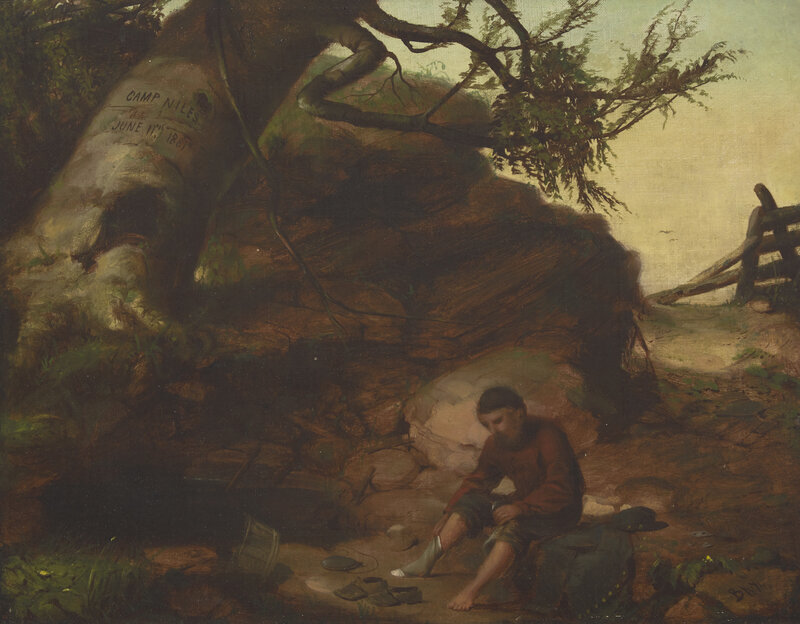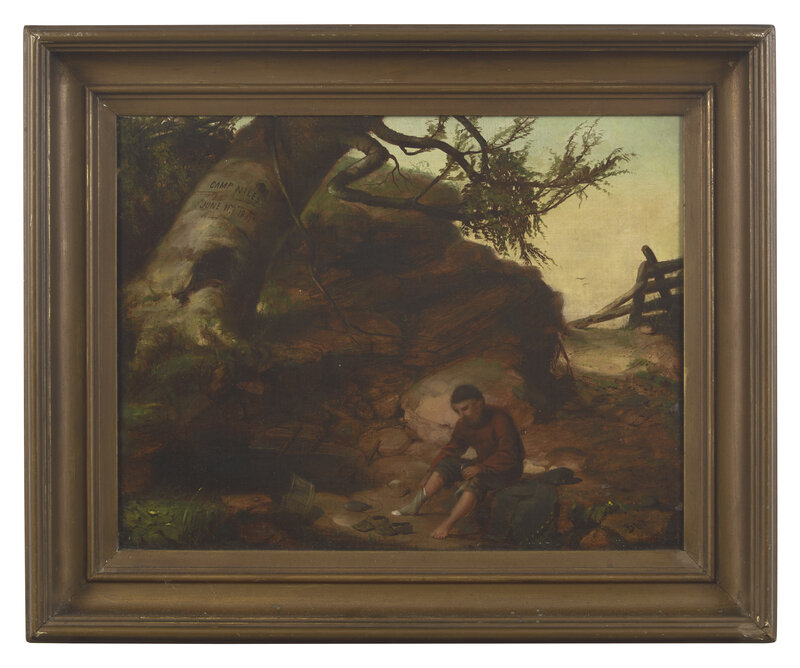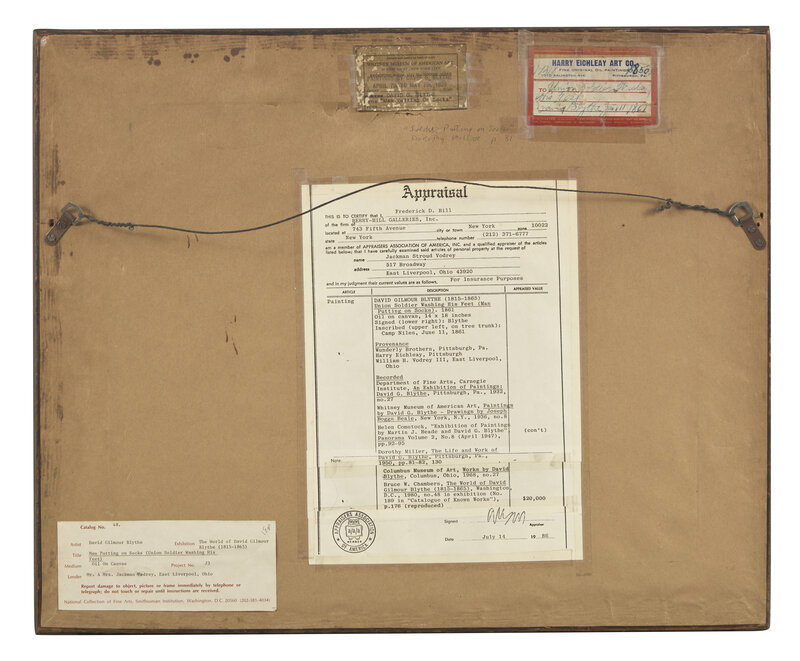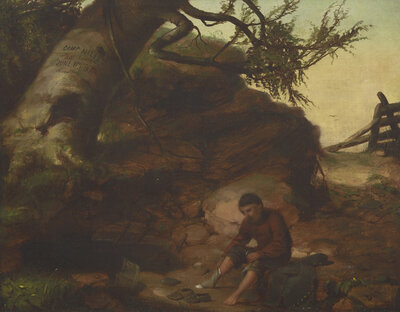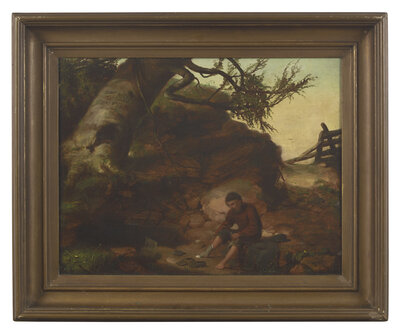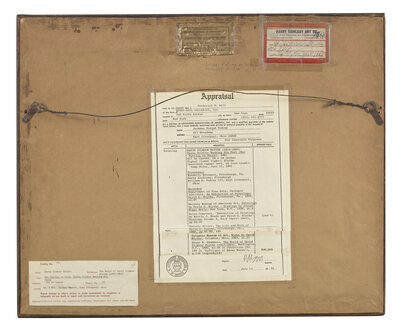Condition Report
Contact Information
Auction Specialist
Lot 8
David Gilmour Blythe
(American, 1815-1865)
Man Putting On Socks (Union Soldier Washing His Feet), 1861
Sale 2105 - American Art and Pennsylvania Impressionists
Dec 8, 2024
2:00PM ET
Live / Philadelphia
Own a similar item?
Estimate
$50,000 -
80,000
Lot Description
David Gilmour Blythe
(American, 1815-1865)
Man Putting On Socks (Union Soldier Washing His Feet), 1861
oil on canvas
signed Blythe (lower right); also inscribed Camp Niles, June 11, 1861 (upper left, on tree trunk)
14 x 18 in.
Provenance:
Wunderly Brothers, Pittsburgh, Pennsylvania.
Harry Eichleay, Pittsburgh, Pennsylvania.
Private Collection, East Liverpool, Ohio.
By descent in the family to the present owner.
Exhibited:
Pittsburgh, Carnegie Institute, Department of Fine Arts, An Exhibition of Paintings: David G. Blythe, December 22, 1932 - January 31, 1933, no. 27.
New York, Whitney Museum of American Art, Paintings by David G. Blythe-Drawings by Joseph Boggs Beale, April 7 - May 7, 1936, no. 8.
Columbus, Ohio, Columbus Museum of Art, Works by David Blythe, March 8 - 31,1968, no. 27.
Literature:
Panorama 2, no. 8 (April 1947): 92-95.
Dorothy Miller, The Life and Work of David G. Blythe, Pittsburgh, 1950, pp. 81-82; 130.
Bruce W. Chambers, The World of David Gilmour Blythe (1815-1865) Washington, DC, 1980, p. 176, no. 189, illus.
Lot Essay:
David Gilmour Blythe, a self-trained artist with a satirist's eye and a keen dramatic sense, is best known for his depictions of the urban working poor. Born in 1815 in East Liverpool, Ohio, he permanently settled in Pittsburgh in 1855 after years of itinerant wandering and work. Although he began his artistic career painting portraits, Blythe was eventually drawn to the brutal reality of the industrial, gritty city, and captured the dirty faces of street urchins at play, pickpocketing hooligans, and street vendors hawking wares.
When the Civil War broke out, Blythe became an enthusiastic supporter of the Union cause. Although he could not enlist because of his age, the artist followed the Thirteenth Regiment of Pennsylvania Volunteers into the field, in the hopes of witnessing battle. One member of the regiment wrote of Blythe, “He was a welcome guest at any mess he fell in with in constant wandering around.” (as quoted in D. Miller, The Life and Work of David G. Blythe, Pittsburgh, Pennsylvania, 1950, p. 80) In all, he spent close to four months living with these PA soldiers, basically as an embedded journalist.
Although neither Blythe nor the Thirteenth Regiment ever saw battle, his tour was not unproductive. The sketches he made onsite were later turned into at least ten works of art featuring the Civil War as a backdrop, including the present painting, Man Putting On Socks (Union Soldier Washing His Feet), 1861. As in his paintings prior to the war, the artist captures a quotidian scene. Here, a soldier is seen pulling on his socks while sitting on a rocky ledge, his Union jacket and cap next to him. A stream runs nearby, presumably the source of the water in which he has washed his feet. Although Civil War paintings typically focus on the battlefield, it was more often disease that could kill a man. The simple hygienic act of washing one’s feet and putting on dry socks was possibly more of a guarantor of life than luck and skill in battle. Although a seemingly mundane chore, Blythe reveals in this act what a soldier’s life truly consisted of on a day-to-day basis, in order to survive.
